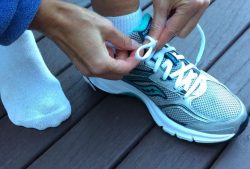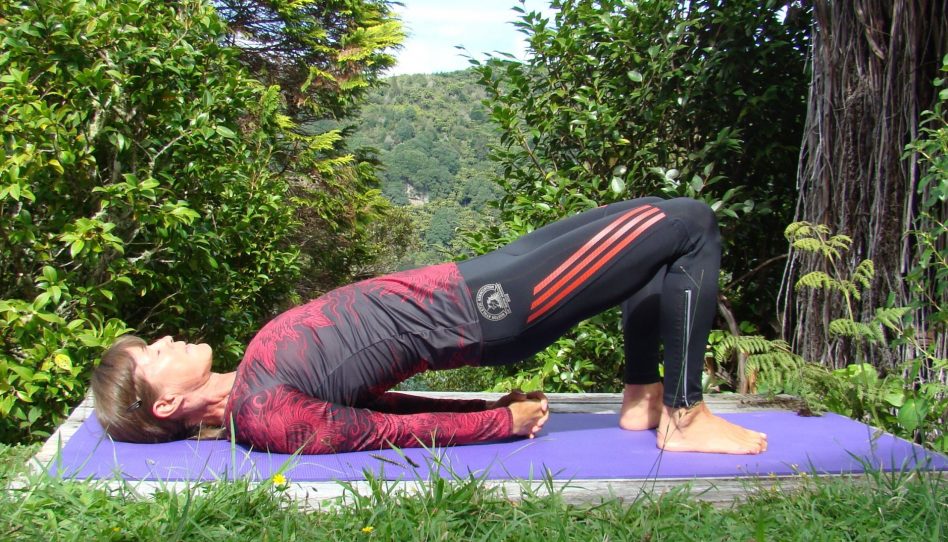How to Fit Your Running Schedule Into Everyday Life
Uta Pippig is a three-time champion of the marathons in Boston and Berlin, writer and public speaker for “Take The Magic Step®” and “Running to Freedom™.” She is now also writing for the German daily newspaper “DIE WELT”.
The choices we make every day have a big impact on whether we will be fit and healthy for a lifetime, and the deep desire for this quality of life is motivating more and more people to successfully fit their fitness program into their daily routine. They are the lucky ones among us, because it can be a challenge for many people to make firm day-to-day plans in our fast-moving times.
Within the framework of our commitments, WE are the key actors: masters of our thoughts and actions every day. So we CAN make clear decisions about creating free time several days a week to do something for our fitness. Through my work as coach and athlete, I was able to gain valuable insights on how to combine work and family with running, a successful fitness program and proper recovery.
First of all, decide whether it is best for you to pursue your fitness in the morning, during the day or in the evening. There are two questions that you can take into consideration in your decision-making process: Are you a morning or an evening person? And what free time do you have, given the time you want to spend with family and need to work?
Set A Specific Time for Your Running Workouts

It is most effective to treat your training like any other set obligation. Avoid leaving the planning of your weekly training schedule—including your important weekend workouts—to chance: Rather set aside specific times, which are adhered to and no longer questioned. For example, decide that you are going to run at six in the morning instead of only when you feel like it. Another way of ensuring you adhere to your routine is to set a time for a workout with a friend or a running partner. Then there is no turning back. The run is scheduled; you do not want to disappoint your friend.
When you combine running and exercise with continuity, your goal of life-long fitness remains achievable. You may even benefit from a double effect: you are rewarded with additional mental freshness as well as physical fitness, which as a result will continuously motivate you to keep to your plan.
Can Sleepyheads Exercise Before Work Anyway?
There are several choices to effectively fit your fitness and running schedule into your work day: before or after work, during your lunch break or—what would be the most time-saving for many—on the way to or from work.
If you run regularly in the morning, your body gets a boost in a natural way. Many people report that physical activity shortly after they get up makes them feel fitter for the rest of the day. Because they have exercised they are more energetic and function better.
If you are a night owl and tired early in the morning, try to walk for a few minutes before you start running. Many people start their day in the gym, on the treadmill. Training in the morning is one of the most reliable ways to integrate running into your everyday life.
Anyone who runs in the morning faces the question of whether he or she should drink something just before the workout. Or could a small snack be beneficial? A glass of water immediately after getting up is recommended for everyone. And if your digestion does not cause any problems, you can try a snack like a banana, apple, porridge or a piece of an oat or muesli bar.
Running After a Stressful Day Helps
Some companies offer their employees the opportunity to use the lunch break for working out. Those of you who are so fortunate will also have the benefit of feeling refreshed mentally for the rest of the day. Corporate Challenge 5K races, in which companies field teams of runners, are held every year in cities worldwide and can be an additional motivation.
If you have the opportunity to move up the start of your work day by an hour in the morning, you can go home earlier in the afternoon and work out then. This is especially useful during the winter months to catch some more daylight. Later in the evening, training in the gym is a good idea. Or perhaps there is a nearby track, well-lit and safe. It can be fun to know you will be with others. Check your local running club: most have scheduled workouts that you can include in your weekly planning.

If you are able to go out for a short run after a long work day, it is an opportunity to unwind and breathe deeply. You can mentally let go, release stress hormones and feel more comfortable and relaxed afterwards.
Cross-Training Can Be Useful
Since most people are busiest during the week, I advise you to schedule shorter training sessions for those days. The weekend is preferable for longer runs. You can take more time mentally to prepare yourselves for your workouts and recover sufficiently afterwards. Maybe you can even treat yourself to a massage or yoga session.
Throughout the year, training can be designed differently and integrated into your daily life. Stay flexible: use the different conditions of each season to your advantage. It can be very exciting to combine your running with cross-training, like spinning, swimming, hiking, skiing or weight training.
So take your time and find a concept that suits you—one that motivates you again and again. This could include running and training adventures with friends and your family—you spend valuable time together and at the same time you stay fit together.
And if you are really pressed for time and you might feel a little tired at the end of the day, even a short walk in the evening can be refreshing. My wish for you is that you can set the pace of your everyday life as “sporty or fast” as you can set your times for your running.
Yours,

Adapted from my column „So können Sie das Laufen mit Ihrem Alltag verbinden“ in DIE WELT with permission.
*Uta Pippig, 51, is one of the most successful female marathon runners of the ’90s. She has won Berlin and Boston three times each. Today she lives in Berlin, Germany, and in Boulder, Colorado, and with her organization “Take The Magic Step®” she commits herself to increasing people’s awareness in the areas of fitness, nutrition and health.
Reading Suggestions:
- Posted April 7, 2017
© Copyright 2017-2022 Uta Pippig and Take The Magic Step®. All Rights Reserved.
More Insights

A Hilly Topic: The Boston Marathon Course
The most effective approach for tackling the Boston Marathon course is to stay relaxed within your own unique stride and cadence. The frequent alternation of uphill, downhill, and flat sections will tempt you to break from your pre-race strategy, but stay with your plan.
Uta’s Favorite Exercises to Improve Your Fitness and Running Technique
Uta Pippig has designed an at-home fitness program which only uses your own body weight, steps, and a Theraband. They are eight exercises that Uta often does herself.
Uta’s Yoga and Stabilization Guide for a Better Running Technique
Runners, especially, can benefit from a well-balanced yoga and stabilization program. Uta suggests effective combinations of poses and exercises that have helped her gain the flexibility and balance that can lead to a better running technique for everyone.
How a Clever Mental Focus Can Get You Through Running Injuries
Running injuries can be devastating, but learning to focus mentally can speed up the healing process. Uta explains how the forced break from running can actually provide future benefits.